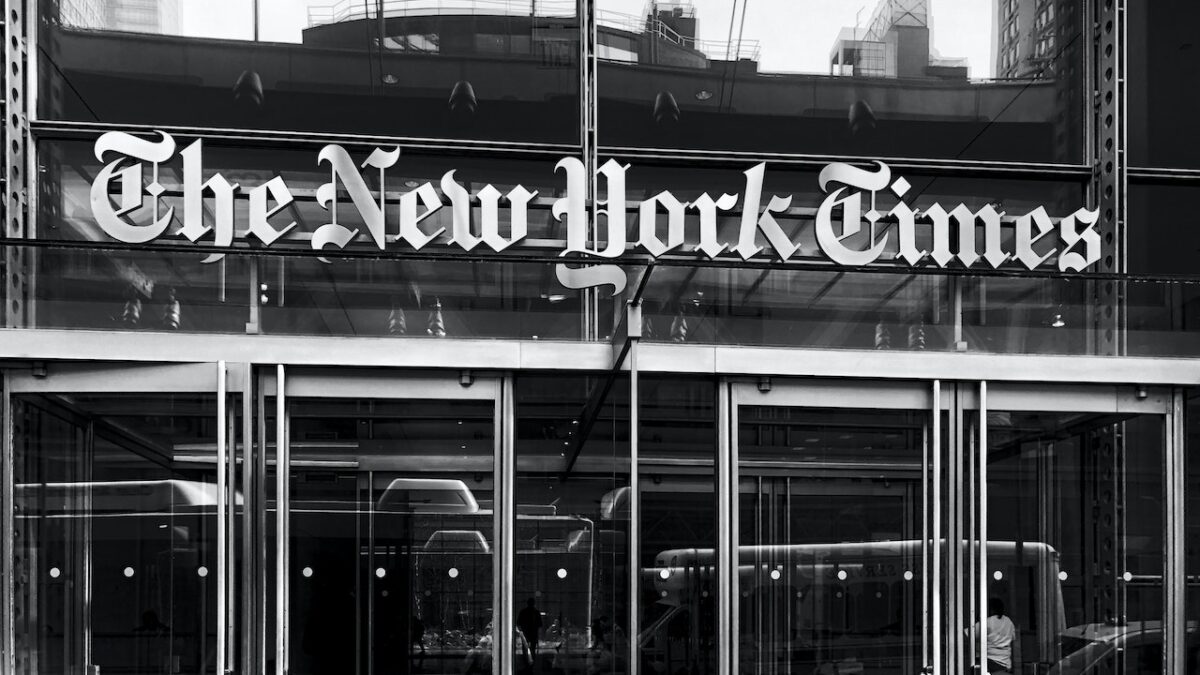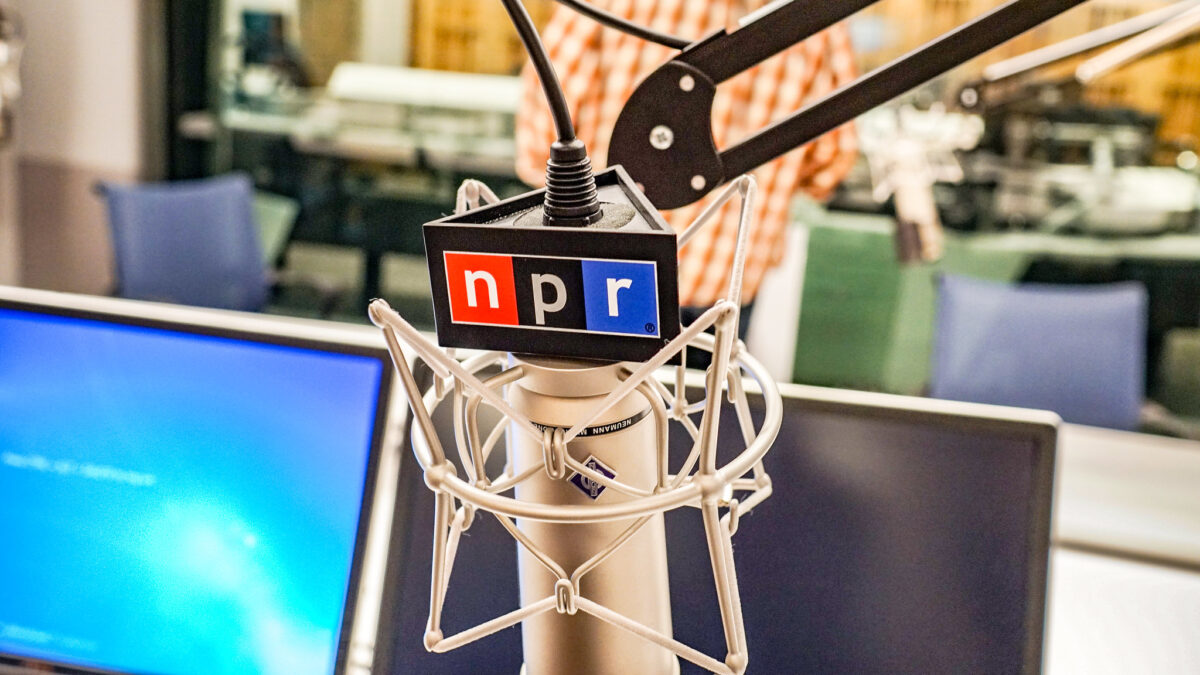Anonymous sources were once rarely used in journalism. They would only be cited when trying to preserve someone’s physical safety or report on the most sensitive national security matters, and there was an expectation that such unusual sourcing be reviewed by editors and carefully corroborated whenever possible.
Now anonymous sourcing has become the norm in reporting and is frequently used as a political weapon to disseminate Democrats’ talking points and smear their enemies. The illicit use of anonymous sources to launch libel against Democrats’ enemies ballooned after Donald Trump won the presidency in 2016, and the tactic was used to develop the Russia-collusion hoax and multiple other smears.
The most recent example may be the Chinese spy balloon news cycle. When word reached the public that Red China spent days hovering over the United States collecting sensitive information, public outrage ensued. Dozens of legislators and governors and Trump demanded President Joe Biden shoot down the balloon as soon as possible.
The Biden administration refused, claiming that neutralizing the airborne threat could cause harm to civilians. This initial claim aired in corporate media, sourced to an anonymous “official” who offered no evidence, that “the balloon did not pose a military or physical threat” to the United States. This decision, once again, drew ire from Americans.
Once the administration finally did shoot down the balloon over the Atlantic, the Biden administration pointed fingers. An unnamed official at the Department of Defense allegedly told reporters at an off-camera press briefing on Feb. 4 that Chinese balloons like this one “transited the continental United States briefly at least three times during the prior administration.”
That admission kicked off a corporate media frenzy. The press took the Pentagon’s word for it and accused Republicans of a “double standard.” Those who called for the end of the balloon, the press claimed, were hypocrites and Trump even more so because he “failed” to shoot down the spy equipment while in office.
Less than one day later, Trump and several high-level Trump national security officials who would have been briefed about a security breach during their tenure went on the record, with their names behind their statements, to deny any knowledge of Chinese spy balloons surveilling the United States under their watch.
“I don’t ever recall somebody coming into my office or reading anything that the Chinese had a surveillance balloon above the United States,” Mark Esper, who was defense secretary from 2019 to 2020, told CNN.
Christopher Miller, who was acting defense secretary from 2020 to 2021, admitted “the first time I ever heard of anything like this was this weekend.”
“Had not a clue,” Miller said. “If something like that had happened, that’s like a national security threat.”
“I certainly never became aware that there was a three-bus-sized floating device coming across our country for five days, either as CIA director or secretary of state. [And] I’ve talked to others who are on my teams — they don’t know anything about it either,” said Mike Pompeo, who served as director of the Central Intelligence Agency and secretary of state under Trump.
Robert O’Brien, another former Trump national security advisor, said, “Unequivocally, I have never been briefed on the issue.” Former Director of National Intelligence John Ratcliffe outright stated the Biden administration’s anonymously sourced claim was “not true.”
Even former National Security Advisor John Bolton, who has a history of fabricating intel and smears about Trump, said the Biden administration’s conveniently timed revelation was news to him.
“I don’t know of any balloon flights by any power over the United States during my tenure, and I’d never heard of any of that occurring before I joined in 2018,” Bolton told Fox News. “I haven’t heard of anything that occurred after I left either.”
Gen. Glen VanHerck, commander of North American Aerospace Defense Command and U.S. Northern Command, “clarified” two days after the Pentagon’s initial accusation that “we did not detect those threats” at the time Trump was in office. The Narrative™ that Trump failed to shoot down Chinese spy balloons had already made its way onto the pages and TV screens of millions by the time the Biden administration decided to walk back its smears against the previous administration filtered through an anonymous source to compliant media outlets.
On Feb. 7, days after Trump staff denied on the record and one day after the Pentagon claimed Red China’s repeat airborne espionage was only discovered retrospectively, corporate media still insisted spy balloons were “spotted on several occasions during President Donald Trump’s administration, including three instances where they traveled near sensitive US military facilities and training areas.”
The source? “People familiar with the matter” who worked under Trump. The people making these claims were conveniently not named, giving them cover to make any accusations they liked and media to air them with no accountability for either entity.
The Smear Operation Playbook
Classic journalism ethics state anonymous sourcing should be rare because the“public is entitled to as much information as possible on sources’ reliability.” Yet the practice of relying on unnamed information suppliers to communicate breaking news has become commonplace, especially when fronting smears against Democrats’ opponents. As a matter of fact, anonymously sourcing what later prove to be complete lies is often rewarded by the journalism industry today.
The most notable example of anonymous sourcing as a weapon was the Russia hoax. That is a years-long coup led by Democrats and intelligence agencies with the eager help of the corporate media to disqualify Trump from the White House and prevent his presidency from being effective. The Russia hoax also resulted in failed impeachments. It’s fair to say it never could have been pulled off without outlets such as CNN, The New York Times, The Washington Post, and more using unnamed sources to discredit their political enemies.
The Trump years were rife with media manipulation involving anonymous sources. In one dramatic episode, the media claimed to prove that Donald Trump Jr. was sent an email by Wikileaks giving him early access to leaked emails from top Democrats. Not only was the report untrue — CNN never saw the source email to Donald Trump Jr. and instead relied on the word of two anonymous sources who got the date on the email wrong — but the botched CNN report dramatically exposed how anonymous sources can lead to misinformation.
CNN’s faulty reporting was immediately “confirmed” by MSNBC and CBS. Of course, confirming erroneous reporting is an impossibility unless all three news outlets were relying on the same sources, confident that their anonymity would create the false impression that multiple sources could verify the story. In this case, the sources appear to have come from the office of Rep. Adam Schiff, a known liar and key perpetrator of the Russiagate hoax. This issue of multiple news outlets citing the same anonymous source has happened more than once, and it continues to be a problem.
But that failure was just the tip of the iceberg. During the Trump years, the media also claimed Trump’s national security adviser illicitly reached out to Russia’s government before Trump took office; that Trump aide Anthony Scaramucci was linked to the Russian Direct Investment Fund; that Trump attorney Michael Cohen confessed that Trump “directed” him to lie about contacting a Russian official; that Russia offered members of the Taliban bounties in exchange for killing American soldiers and Trump knew about it; that Trump pressured the Georgia secretary of state’s office to “find the fraud”; and many, many more complete fabrications relying on sources who hid their smears behind anonymity.
All of these claims were unvetted, untrue, and should have never been published. Instead, some were showered with praise and status. Others were barely corrected long after the coverage served its political purpose.
Real reporting requires due diligence. Corporate media, desperate to aid Democrats in their conquest of any Americans who disagree with them, have become pipelines of government information manipulation, especially from intelligence agencies. As a result, anonymous sources are easily duplicated and repackaged as “independent confirmation,” and so-called “news” sites are plagued with unverified intelligence and information — or, worse, allegations they verifiably know are untrue.
And they are happy about it. In 2019, then-New York Times Public Editor Liz Spayd denounced her employer for being “too timid in its decisions not to publish the material it had” quickly about Trump’s nonexistent connection with Russia.
“The idea that you only publish once every piece of information is in and fully vetted is a false construct,” she wrote. “If you know the FBI is investigating, say, a presidential candidate, using significant resources and with explosive consequences, that should be enough to write.”
Her call to normalize the unprofessionalism of partisan actors in newsrooms received amplification from fellow journos. The ubiquitous use and elevation of this unethical practice may have been popularized during the rise of Trump, but it has far outlived his presidency, something that independent media have routinely observed for years.
Today’s media complex relies on readers to keep trusting what it says, regardless of its extremely tainted records. The press doesn’t deserve that kind of benefit of the doubt.
Americans are still unclear on how many Chinese aircraft have compromised U.S. airspace and who let them. What they shouldn’t be unclear about is that the corrupt, untrustworthy, and democracy-threatening corporate media use anonymous sources to advance disinformation operations and push political narratives that often have no relationship to the truth.









